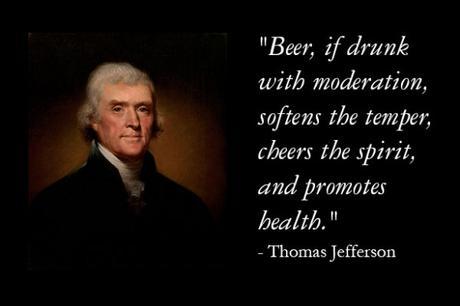
There's a reoccurring conversation I've had in recent months, talking with with others about why people make the decision to drink craft beer.
The answers are plenty - taste, community, etc. - but one that typically doesn't get a deep dive is a reflection on why "craft" matters both as a designation for the beer and the way people feel about it. Ever since the Great Recession, American consumers have reevaluated how they spend their money and on what, especially in terms of food and related goods.
First, people started caring more about where their food was coming from and how it was treated, which you can see from the dramatic rise of U.S. farmers markets over the last 20 years.
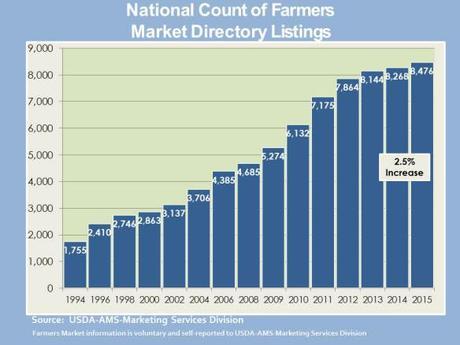
That went hand-in-hand with changing attitudes about quality of foods. In the wake of the Great Recession, American households cut down spending on eating out, prepared more meals in-home and decreased daily calories, especially in terms of fat, saturated fat and cholesterol.
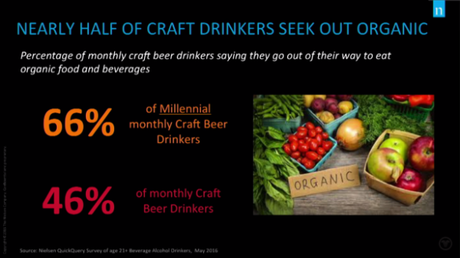
So what does this have to do with beer? Even when money was tighter during the recession, craft beer still thrived. People felt a greater connection to a product that not only tasted different, but were OK with spending more on the perceived quality that came along with it. Beyond their wallets, drinkers also began giving greater consideration to what it meant when consuming craft beer in terms of ingredients and nutritional content.
Years after the recession ended, these attitudes continue to grow. People are paying more attention to what they put in their bodies and what that means for them in the immediate and long term. Naturally, now may be the time to start paying closer attention to how that plays out in terms of what our brains and waistlines want when it comes to beer.
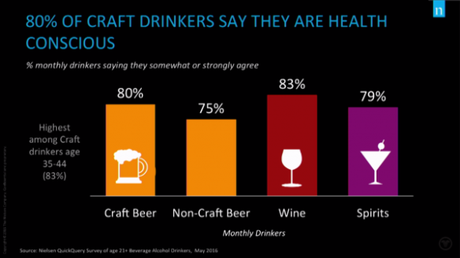
There are many ways in which you see a marketing change among the biggest players in beer, working to attract the most health conscious drinkers.
It shows up in one of the " Drinks of the Summer " with hard seltzer lines produced by Boston Beer, Wachusett Brewing and Mark Anthony Brands, which produces the Mike's Hard line of beverages. Each prominently showing its low calorie count (~100) with a near-average beer ABV.
It also appears in a renewed focus in low ABV and non-alcoholic beers, the latest business model for AB InBev:
"The higher alcohol segment is largely covered by craft," said Euromonitor senior drinks analyst Spiros Malandrakis. "The mainstream boys have decided to go to a segment that is less saturated."
The Belgium-based brewer, on the verge of buying its largest rival SABMiller, has forecast lower and zero strength beer will grow from a small base to make up 20 percent of its sales by the end of 2025.
Most important, there's the wild success of a beer like Michelob Ultra, which I've written about here and here, and recently got a nice feature on Bloomberg, which noted the brand now ships 5.2 million barrels of beer, more than Sam Adams, Sierra Nevada and New Belgium combined. AB has hit a home run with Ultra, which has increased annual shipments by 27 percent in the past three years. Who's buying? In a 2013 study, it was found 74 percent of Ultra sales in grocery stores from 2002 to 2006 were due to new drinkers.
Which is why something like the Beer Institute's " Brewers Voluntary Disclosure Initiative," which asks breweries to place nutritional facts on products, is both a big deal for its business implications and perfect timing for public consciousness about how booze impacts bellies.
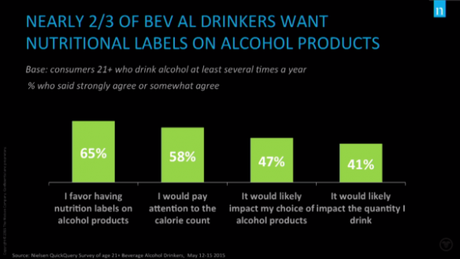
If there was ever an ideal time to add labels with caloric information, now would be it, as interest is only going to grow when 80 percent of craft drinking Americans (those buying craft at least once a month) consider themselves to be health conscious. The initiative, which already has the backing of AB InBev, MillerCoors, Heineken, Constellation Brands, North American Breweries and Craft Brew Alliance, puts craft breweries in a curious position. Whether this program or another being rolled out in 2017 by the FDA that calls for restaurants to post nutritional information, the "movement" toward more health-related transparency is taking place.
Attention craft brewers: are you paying attention? Nutritional/serving facts coming to Johnnie Walker labels. https://t.co/KpHhvU3eGA
- Chris Furnari (@BrewboundFurn) June 30, 2016
For consumers paying attention to their daily intake, the light lagers and other lower ABV offerings from the country's biggest beer companies may suddenly have a little more pull compared to so many craft beers (average ABV of 5.9 percent) that tip the scale a little more in calories.
However, the increased interest in health and wellness also offers a unique opportunity for small breweries. While there are certainly legal and scientific hoops to jump through, craft breweries who present some range of health information for beers may catch the attention of customers. I'm honestly curious: what might happen if a brewery posts "low calorie" or an actual number next to their 4 percent ABV session IPA that already sells well? Or their pilsner or cream ale?
Rand is taking advantage of our Metazoa Light, your local light craft brew sitting just around 100 cal. Just tapped! pic.twitter.com/qeS5lxWDXM
- Metazoa Brewing Co. (@MetazoaBrewing) May 9, 2016
That Michelob Ultra piece by Bloomberg offers a perspective hidden at the bottom of the story that addresses this in particular:
"It's good for a mainstream beer," he says of Ultra. "I can actually taste a little flavor." His wife, Tiana, declares Ultra "bearable." This is about the normal level of enthusiasm on the boat. Other verdicts include: "a good keep-you-going beer" and "not bad, actually."
People are buying Ultra, but they aren't exactly going nuts about it. In the same way craft beer was able to set its targets on the "fizzy yellow water" of Big Beer years ago, does a movement toward better diet open up the door for all these session beers we keep seeing today?
If you're holding a Michelob Ultra, it may say you like to go on all-day hikes, but if you're holding a Berliner weisse or session IPA, nobody will know you're thinking about health. They'll just think you're trendy.
Related: Earn Your Beer: Drinking Beer in a Post-Beer-Belly WorldBryan Roth
"Don't drink to get drunk. Drink to enjoy life." - Jack Kerouac

